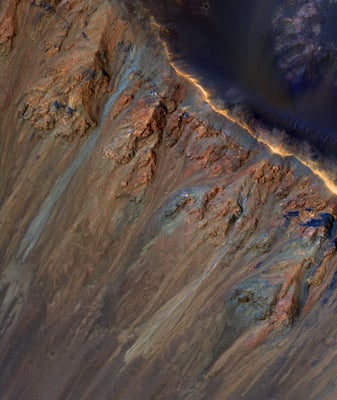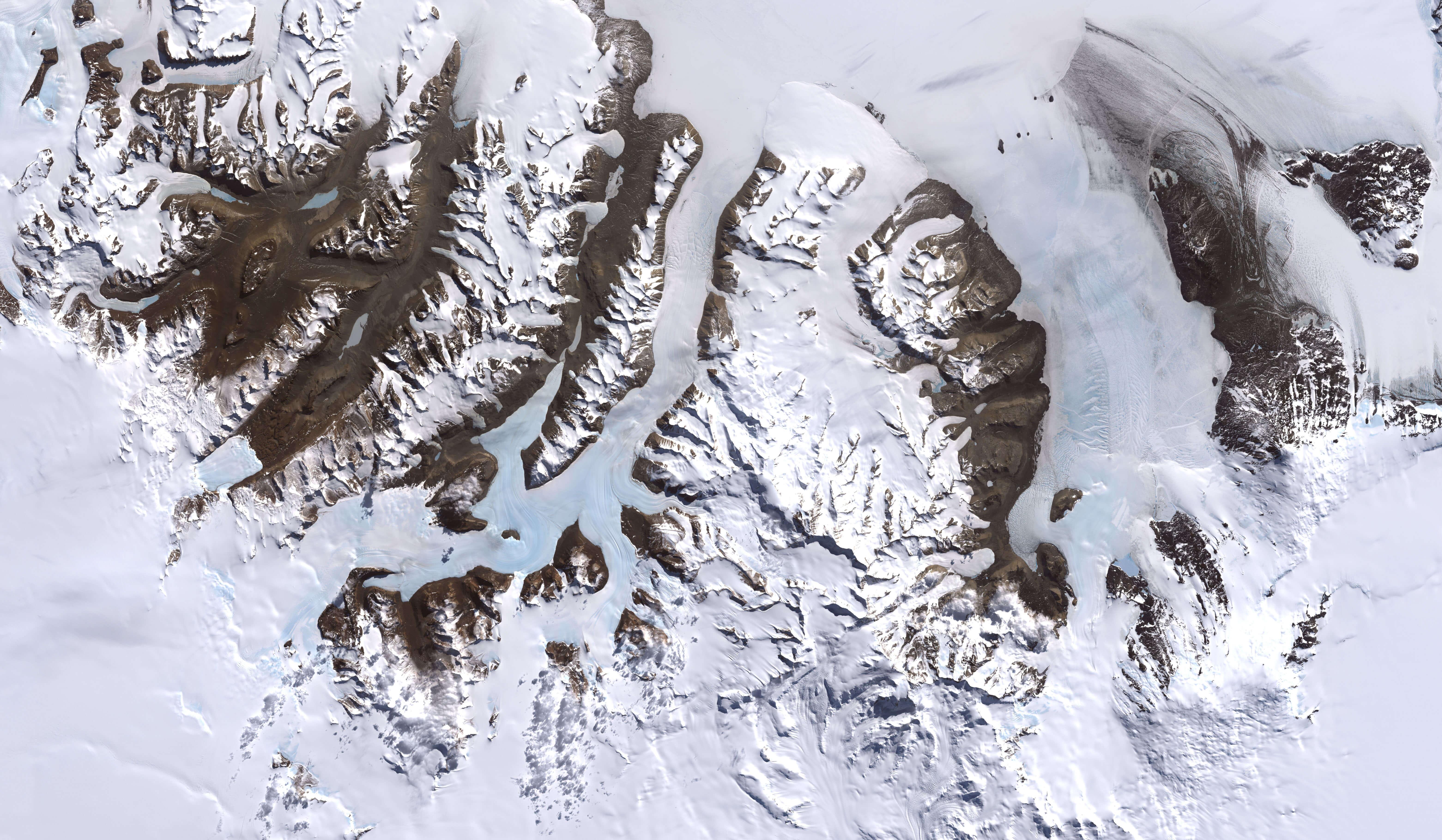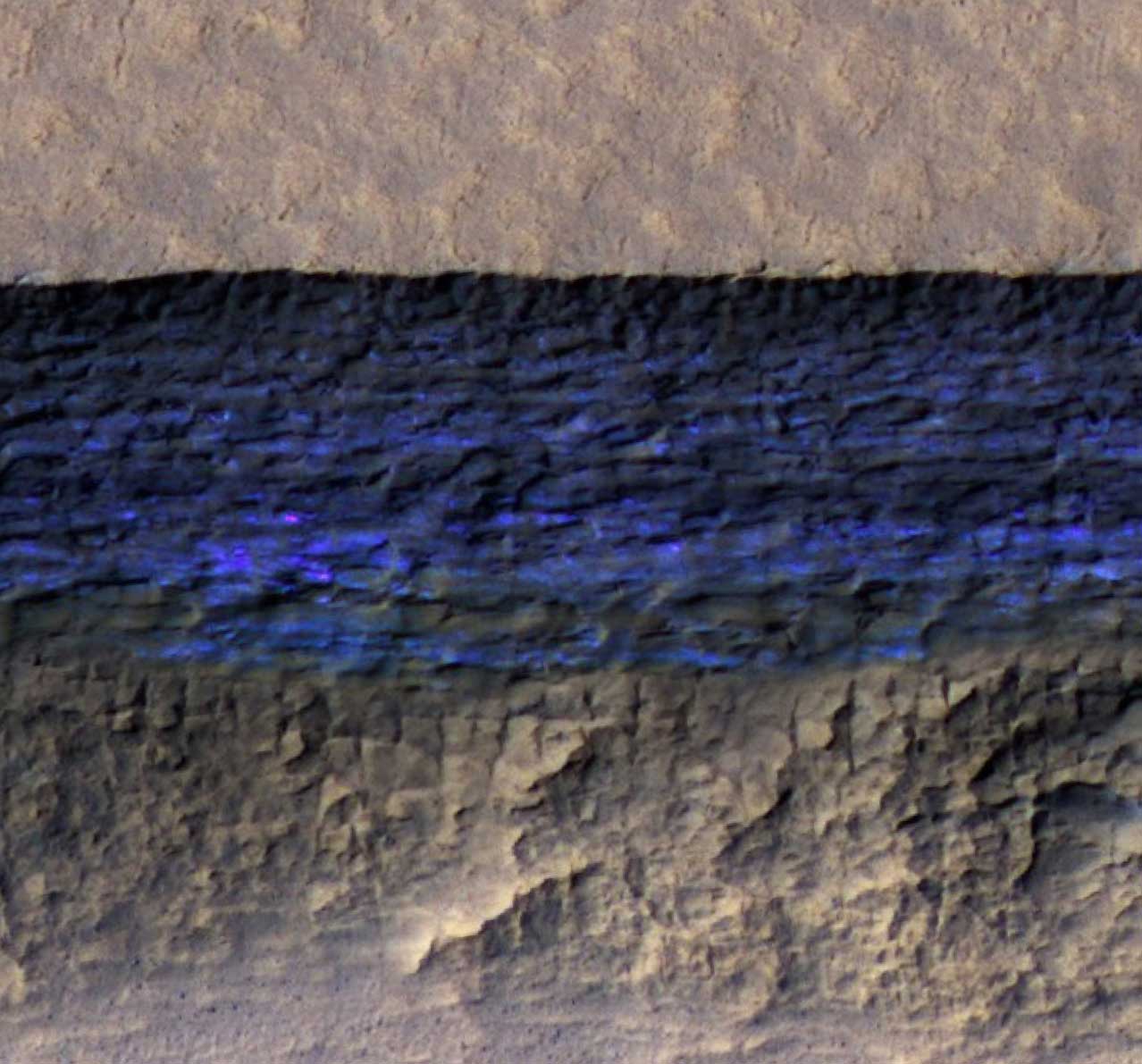What is Causing Martian Landslide?

HiRISE camera view of Krupac crater on Mars featuring gullies along the rim and RSL lower down the crater wall. Image © NASA/JPL/University of Arizona.
Martian geography is not stable and this has always attracted significant scientific and even public attention. This feature is also important to understand as it lays the hope for signs of liquid water and therefore life.
One striking explanation is that liquid debris flows or dry granular flows caused this movement but neither model can completely account for the seasonal martian flow features known as Recurring Slope Lineae (RSL).
But a team of researchers led by SETI Institute Senior Research Scientist Janice Bishop, a member of the SETI Institute NASA Astrobiology Institute (NAI) team, has come up with a theory about what is causing landslides on the surface of Mars.
This team gave the alternative explanation; ice melting in the near-surface regolith is causing changes at the surface that make it vulnerable to dust storms and wind and as a result, the RSL features appear and/or expand on the surface of Mars today.
The team believes that first underground water ice must mix with a combination of chlorine salts and sulfates to create a type of slurry that destabilizes the region of loose unconsolidated rock and dust that sits atop a layer of bedrock and then the dry wind and dust storms of Mars take over, blowing the destabilized material into new patterns across the Martian surface.
Bishop said, "I am excited about the prospect of microscale liquid water on Mars in near-surface environments where ice and salts are present. This could revolutionize our perspective on habitability just below the surface on Mars today."
This is not the first time that researchers have suggested that chlorine salts might be involved in the creation of RSL. Scientists have already read the data from High-Resolution Imaging Science Experiment (HiRISE) data from the Mars Reconnaissance Orbiter (MRO) shows RSL located on sun-facing slopes which shows they continue to appear and/or expand over time. Previous studies have suggested that RSL are related to chlorine salts and noted their occurrence in regions of high sulfate outcrops.
Bishop’s team extended the earlier observations with a near-surface cryo-salt activity model based on field observations and lab experiments. The SETI team collected data at some of those locations and noted that surface destabilization has already been observed when salt interacted with gypsum, a type of sulfate. For this project, the team collected data in the Dry Valleys, where the soil geology and temperature are remarkably similar to those found on Mars by the Phoenix lander and MRO.
Mars analog field investigations on Earth, such as in the Dry Valleys of Antarctica, the Dead Sea in Israel, and Salar de Pajonales in the Atacama Desert, show that when salts interact with gypsum or water underground, it causes disruptions on the surface, including collapse and landslides.

"During my fieldwork at Salar de Pajonales, a dry salt bed in Northern Chile, I have observed numerous examples of the action of salts on the local geology. It's gratifying to find that it could play a role in shaping Mars as well," said Nancy Hinman, Professor of Geosciences at the University of Montana and member of the SETI Institute NAI team.
As a part of laboratory work to verify their theory they conducted lab experiments and observed if they froze and thawed Mars analog samples comprised of chlorine salts and sulfates at low temperatures such as would be found on Mars. They found slushy ice formation near -50 °C, followed by the gradual melting of the ice from -40 to -20 °C. As on Mars, the Dry Valleys' surface regolith is scoured by dry winds most of the year. However, subsurface permafrost contains water ice, and chemical alteration appears to be occurring below the surface.
This modeling the behavior of chlorine salts, sulfates, and gypsum under low temperatures demonstrates how interrelated these salts are. They explained; it may be that this microscale liquid water migrates underground on Mars, transferring water molecules between the sulfates and chlorides, almost like passing a soccer ball down the field.
"Probing the low-temperature behavior of Mars analog permafrost in the lab with infrared spectroscopy revealed that thin layers of liquid-like water were forming along grain surfaces as the salty soils thawed under subzero, Mars-like temperatures," said Merve Yesilbas, NASA Postdoctoral (NPP) Fellow at the SETI Institute and collaborator on the NAI team.
Water ice has been detected below the surface on Mars within soil scooped up at the Phoenix landing site, as well as from orbit using radar measurements, and using neutron and gamma-ray spectroscopy. More recently, HiRISE has captured views of this near-surface ice at mid-latitudes.

The results demonstrate that interactions of sulfates and chlorine salts in fine-grained soils on Mars could absorb water, expand, deliquesce, cause subsidence, form crusts, disrupt surfaces, and ultimately produce landslides after dust loading on these unstable surfaces.
In addition to helping explain Mars' geological and chemical processes, this theory also suggests that the martian environment continues to be dynamic - that the planet is still evolving and active - which has implications for both astrobiology and future human exploration of the Red Planet. The potential for thin films of water below the surface on Mars in salty permafrost regions opens new doors for exploring its chemistry.
Research work was published in Science Advances.
